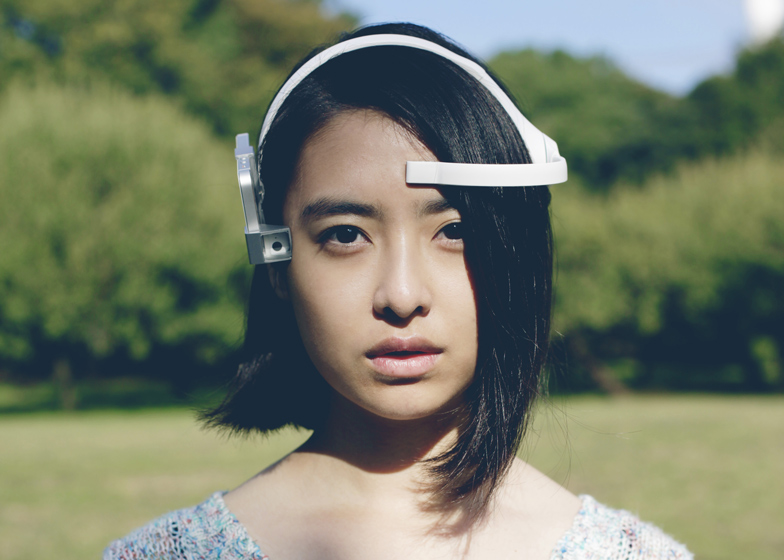A team in Tokyo has created a head-mounted camera that monitors brain waves and automatically starts recording when the wearer becomes interested in something (+ movie).
Developed by Tokyo company Neurowear, the Neurocam headset monitors electrical activity in the brain. When the user sees something that causes a spike in brain activity, it automatically triggers a smartphone camera mounted on the side to start recording a five-second clip of what the user is looking at.
Users download an app on their iPhone, which is then slotted into a harness on the side of the headset. A prism then directs the camera’s lens to look forward at whatever the wearer sees.
The algorithm that powers Neurocam was developed by Professor Mitsukura of Keio University. Everything the wearer sees, and the subsequent reaction in the brain, is quantified on a scale of zero to 100. When the user sees something that the algorithm allocates a score above 60, the headset begins recording. The clips can then be shared on social networks such as Facebook, or viewed at a later date.
"The Neurocam is an extraordinary experiment that challenges the way future cameras can evolve and how humans may interact with such devices," the team said. "The Neurocam allows humans emotions to become integrated with devices, and we see this as a totally new experience."
The team is considering adding extra software features to enhance the user experience. Manual Mode would add emotional tags to the scenes the Neurocam records in the same way it adds GPS and location data. Effect Mode, meanwhile, would automatically overlay filters and visual effects based on how the user was feeling at the time.
They are also exploring how to make the headset more wearable. "In the future, we aim to make the device smaller, comfortable and fashionable to wear," they said.
While still a prototype at present, the project is being backed by Japanese ad agency Dentsu in a joint venture called Dentsu ScienceJam. They believe the Neurocam has a number of applications relevant to advertising and marketing, including helping to determine which products people are interested by in a retail environment.
Another possible use for the the headset could be to aid in urban planning, since the information about interest levels can be overlaid with mapping and GPS data.
The Neurocam is the latest device to come out of the Neurowear project. The team grabbed attention in 2012 with NecoMimi, a giant pair of cat ears that used brainwaves to express the user’s feelings. When the wearer is focused or alert, the ears perk up, but when the device detects the user is tired or sleepy, the ears flop down.
Neurocam follows a trend of camera equipment taking photos independently of the user. Last year, OMG Life released the Autographer, a wearable camera that automatically decides which moments of your life are worth photographing based on changes in light, colour, motion and location.

